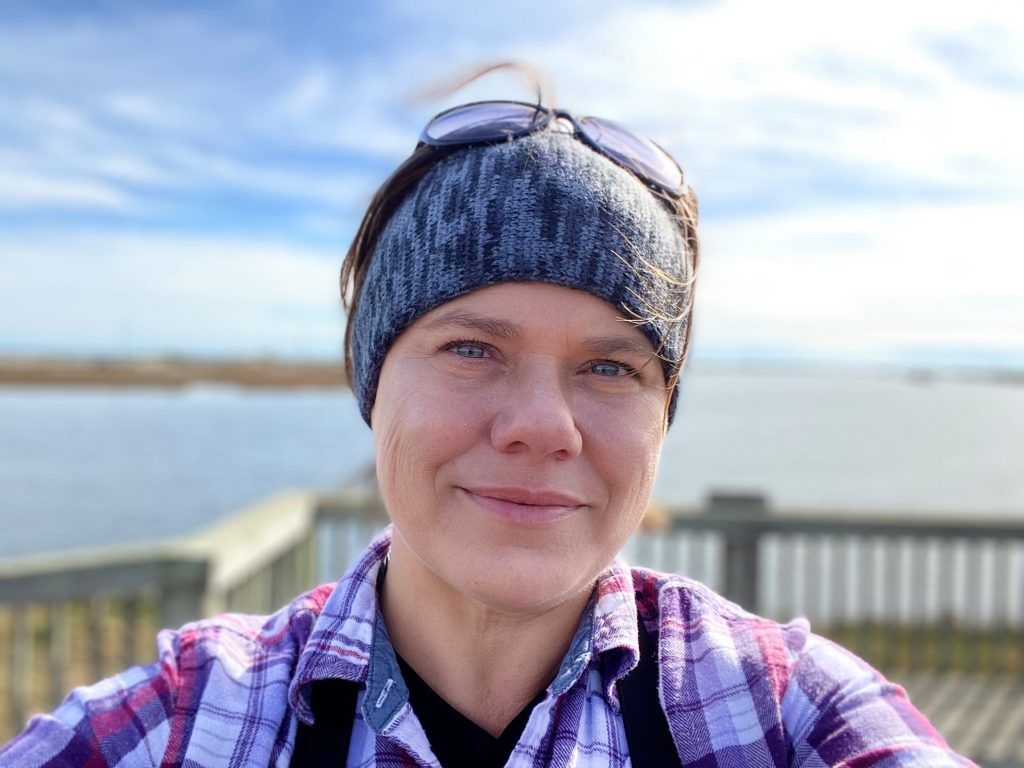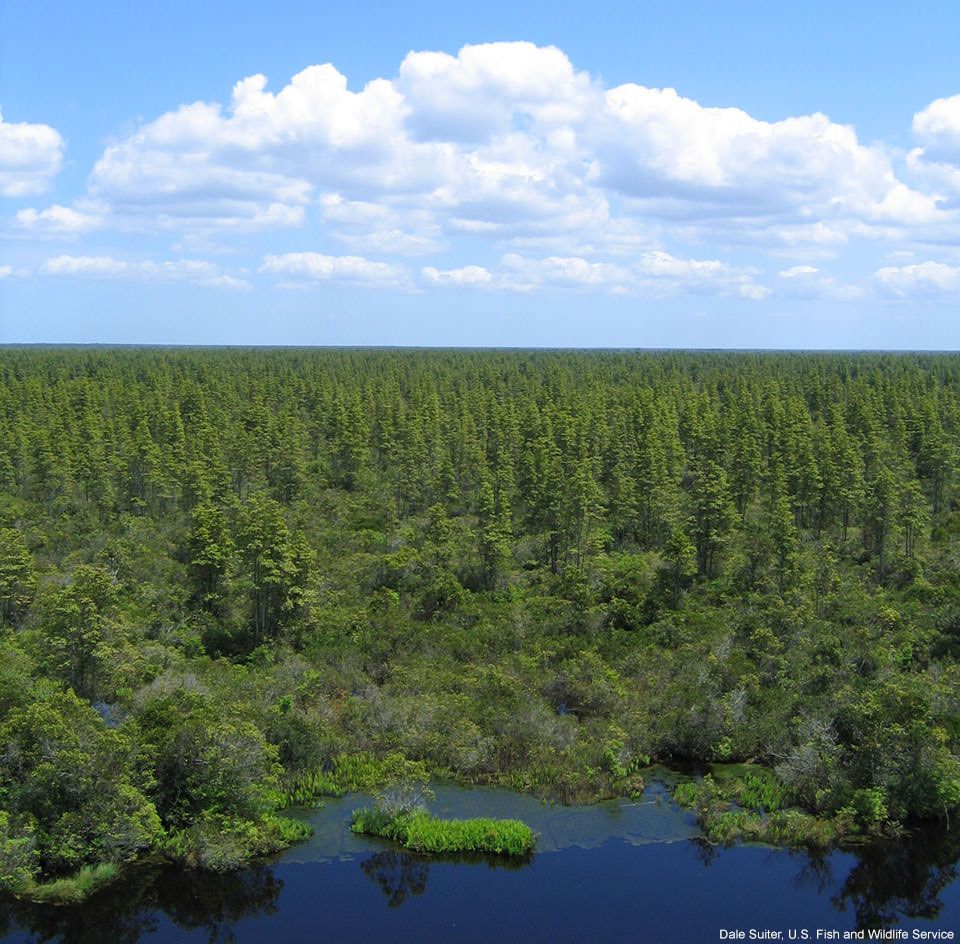About the Author
Heather Patti is an Environmental Consultant and volunteer member of the Science Committee.
Wetlands play a critical role in mitigating climate change effects through carbon sequestration and storage. Climate change in the southeastern U.S. is marked by increasing temperatures, frequent and intense storms, rising sea levels, flooding, and droughts. Coastal wetlands and freshwater inland wetlands, particularly peatlands, emerge as essential carbon sinks due to their ability to store large quantities of carbon over thousands of years surpassing other terrestrial ecosystems. Coastal saltmarshes, with their high productivity, sequester carbon more effectively than tropical forests, and peatlands, despite covering only 3% of global land, store 30% of all land-based carbon. However, drainage, development, land management, and sea-level rise threaten wetlands, leading to carbon releases that exacerbate climate change. Carolinians can help offset climate change impacts and save-guard carbon sinks through land management practices, including wetland restoration and preservation.

About the Author
Heather Patti is an Environmental Consultant and volunteer member of the Science Committee.
Climate change is a real and deeply concerning issue that demands immediate attention. It is well known that climate change is causing increased temperatures, intensified storm events, rising sea levels, and increasing floods and droughts worldwide.
Climate change studies for the southeast region of the U.S. predict increased temperatures, more frequent and intense precipitation, and rising sea levels, which together will lead to more severe storm surges and coastal flooding (Kunkel, K.E. et al. 2020; US EPA, 2010). In the Carolinas, recent storms that caused catastrophic coastal flooding include Hurricane Ian (2022), Hurricane Florence (2018), and Hurricane Matthew (2016). Inland flooding is also expected to worsen, as happened in 2024 in western North Carolina during the devastating Hurricane Helene (Kunkel, K.E. et al. 2020; US EPA, 2010). Climate-driven sea level rise can cause the loss of coastal wetlands and their associated habitats as well as saltwater intrusion, which reduces freshwater sources for drinking and irrigation. Climate change is also predicted to cause more frequent and intense droughts, raising the risk of wildfires. (NCICS, 2020; EPA, 2020).
The earth’s climate has changed throughout time, but the rapid changes seen since the Industrial age cannot be explained by natural processes. Human activities have increased heat-trapping greenhouse gases in the atmosphere. Greenhouse gases include carbon dioxide (CO2), methane (CH4), nitrous oxide (N2O), and fluorinated gases. Carbon dioxide, the most important of the greenhouse gases, commonly enters the atmosphere through the burning of fossil fuels (coal, natural gas, and oil), solid waste, night-time plant respiration, and the decomposition of organic material (US EPA, 2010; US EPA, 2024).
Slowing and reversing the effects of climate change is not an easy task, but can be greatly offset by encouraging carbon sequestration. Carbon sequestration removes carbon dioxide from the atmosphere and holds it in solid or liquid form (Oxford, 2024). Carbon is naturally sequestered through plants - plants pull carbon dioxide (CO2) from the atmosphere during the day through photosynthesis and use it to make food and grow, storing carbon within the plant (Figure 1). Some carbon is released into the atmosphere when plants respire (exhale). Carbon is transferred to the soil through internal transport when plant parts (leaves, roots, etc.) die back (decompose) and become part of the soil. Microbes in the soil cause carbon to be released through respiration during decomposition, but this process is greatly reduced when soils are wet (Richardson et al., 2022, 2023, Figure 1; NOAA n.d.).
Wetlands are the most effective carbon sinks on earth (Ramsar, 2019). Wetland plants and soils play a significant role in sequestering and storing carbon worldwide (Duarte, 2013). Within wetlands, carbon is sequestered in a couple of different ways and over varying periods of time (Figure 1). There is a slow process of forming peat over thousands of years, and a relatively fast process of burying organic matter in freshwater, coastal saltwater and brackish wetlands (Bridgham 2006). Through these processes, carbon can be stored for hundreds, thousands, and even millions of years if left undisturbed, which is how fossil fuels are created if placed under pressure.

The rate of carbon sequestration in wetlands is dependent on a multitude of characteristics, such as water salinity, vegetation type, and soil condition, and therefore varies quite a bit from one wetland to another, but combined wetlands play a huge role globally in preventing carbon from entering the atmosphere. Coastal wetlands (Figure 2) are extremely productive with rapid-growing vegetation that promotes carbon sequestration at a faster rate than other terrestrial ecosystems. Studies suggest coastal wetlands sequester carbon ten times faster per year than tropical forests (NOAA, n.d.). Coastal wetland vegetation traps a great deal of suspended sediments and other carbon-rich materials already mentioned, which build up over time under wet conditions and result in much greater amounts of carbon being stored than released from respiration. This also has the added benefit of acting as a mild mitigator to sea-level rise, although it works at a slower pace than what is currently taking place in many coastal regions.

When wetlands are altered for residential or commercial development, road construction, forestry, or agricultural use, they are typically drained. This drainage not only eliminates the wetland’s ability to act as a carbon sink but also releases the carbon previously stored within the wetland into the atmosphere (Richardson et al., 2022). Therefore, the carbon sequestration benefit is lost with draining and large quantities of sequestered carbon is released to the atmosphere (Flanagan et al 2020, Wang et al., 2020). Coastal wetlands lost to sea-level rise also release stored carbon into the atmosphere (NOAA, 2024).
In the Eastern U.S. including the Carolinas, freshwater inland wetlands hold nearly ten times more carbon than tidal coastal wetlands (Nahlik, 2016). However, the most carbon-rich wetlands are peatlands, making them the most effective carbon sink. Peatlands make up only 3% of the world’s land cover, yet they store approximately 30% of all land-based carbon and twice as much carbon as forests do (World Economic Forum, 2021; Ramsar, 2019). Peatlands (Figure 3) are a significant feature of the landscape in the Carolina Coastal Plain. The Santee Coastal Reserve Wildlife Management Area (South Carolina), the Green Swamp (North Carolina), and Pocosin Lakes National Wildlife Refuge (North Carolina, see the Carolina Wetlands Case Study: Pocosin Lakes Restoration white paper for more information and Richardson et al., 2022, 2023), all examples of large peatland restorations in the Carolinas.

By rewetting and restoring wetlands via the use of water control structures and ditch plugging (Figure 4), protecting intact wetlands from development (preservation), and establishing coastal marsh corridors, Carolinians can make a significant contribution to the carbon sequestration process, offsetting the impacts of climate change. See the Carolina Wetland Association’s Landowner's Guide to Wetland Restoration and Importance of Corridors for Marsh Migration white paper for more information on these topics.

Wetlands play a significant role in climate change mitigation by acting as carbon sinks. Due to their wet and oxygen-free condition, organic matter slowly decays in wetland ecosystems sequestering carbon that would otherwise be released. Through this process, carbon can be stored for thousands or millions of years. According to many studies, the total amount of carbon stored in wetlands around the world is similar to the amount of carbon currently in our atmosphere.
Links to more information on carbon sequestration in wetlands:
All Rights Reserved | Carolina Wetlands Association